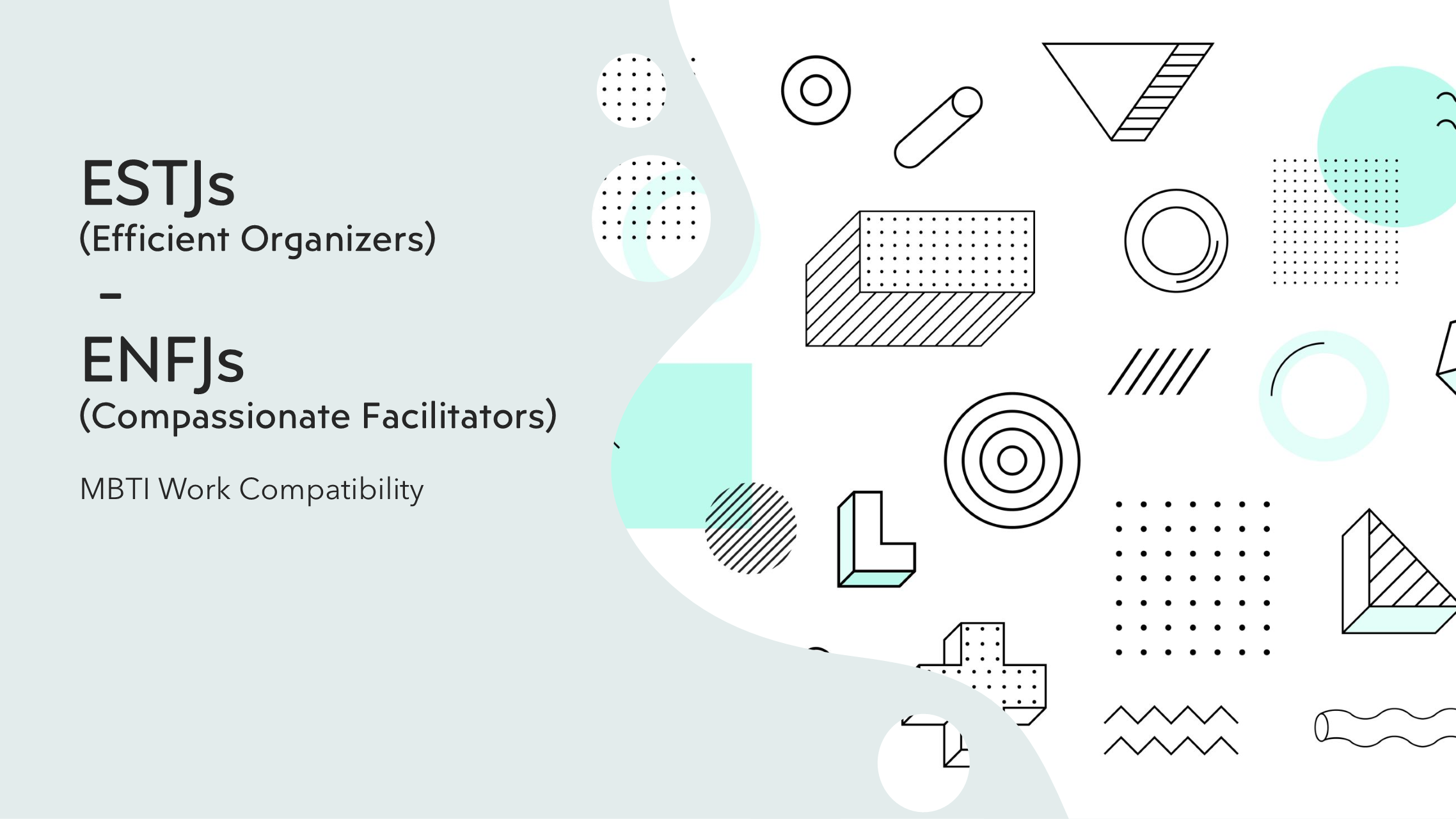
MBTI Work Compatibility - How ESTJs Can Work Better With ENFJs
Working effectively with others can be challenging, especially when two distinct personality types like ESTJ (Executive) and ENFJ (Protagonist) come together. ESTJs are natural-born leaders who value tradition, order, and logic. They’re pragmatic, focusing on structure and efficiency to get things done. On the other hand, ENFJs are empathetic, charismatic, and driven by emotional connections and personal values. Their leadership style tends to be more people-focused, often seeking to inspire and support those around them. Despite their differences, ESTJs and ENFJs can work together successfully if they understand and appreciate each other's strengths and challenges.
Leverage Complementary Strengths
One of the key ways for ESTJs and ENFJs to work well together is by leveraging their complementary strengths. ESTJs are detail-oriented, logical thinkers who thrive in structured environments. They focus on deadlines, processes, and organization, ensuring tasks are completed efficiently. In contrast, ENFJs excel in building relationships, fostering collaboration, and motivating others. They have an innate ability to understand the needs and emotions of the team, making them great at inspiring action. By combining these strengths, ESTJs can ensure that the team stays on track and meets deadlines, while ENFJs can boost morale, create a harmonious working environment, and ensure everyone feels valued. For example, ESTJs can take the lead in creating structured project plans, while ENFJs can focus on team dynamics, ensuring that everyone is engaged and contributing meaningfully.
Balance Structure with Flexibility
ESTJs and ENFJs differ in their approach to structure. ESTJs thrive in well-defined systems and processes, where everything is organized, and there’s a clear path to follow. They value efficiency and may become frustrated when things seem too fluid or disorganized. ENFJs, on the other hand, prefer a more flexible, adaptive approach, where they can respond to the needs and emotions of others as they arise. To work effectively together, both types need to find a balance between structure and flexibility. ESTJs should allow room for adaptability when needed, especially when it comes to addressing the emotional and relational aspects of the team that ENFJs naturally excel at. Meanwhile, ENFJs can benefit from adopting some of the structure and organization that ESTJs bring, particularly when it comes to meeting deadlines and staying focused on goals.
Aligning Values and Approaches
While both ESFPs and ENFJs are compassionate and empathetic, their ways of expressing these values can differ. ESFPs value practicality and immediate, tangible help, often providing support that is hands-on and focused on present needs. ENFJs, however, are driven by their ideals and empathy, focusing on long-term goals and visionary improvements. To harmonize these values, ESFPs can embrace the ENFJ’s visionary approach and try to see the broader impact of their actions, while ENFJs should appreciate the ESFP’s practical solutions and immediate assistance, which can be crucial in the moment.
Improve Communication Styles
Communication can be a challenge between these two types, given their different approaches. ESTJs are typically direct, fact-based communicators who value clarity and brevity. They focus on what needs to be done and are often straightforward in their delivery. ENFJs, in contrast, are more emotionally expressive and prioritize the relational aspect of communication. They are concerned with how their words affect others and may be more indirect, especially if they feel that bluntness might harm the relationship. To improve communication, both types should adapt their style. ESTJs should be mindful of the emotional impact of their words and try to be more tactful when providing feedback, especially with sensitive ENFJs. Acknowledging the emotions and values of their ENFJ counterparts can go a long way in building trust. On the other hand, ENFJs can aim to be more concise and clear in their communication with ESTJs, focusing on actionable points rather than getting too caught up in emotional or theoretical discussions.
Foster Mutual Respect for Different Approaches
For ESTJs and ENFJs to work well together, it’s important for both types to respect each other's different approaches to problem-solving. ESTJs may feel that ENFJs are too idealistic or emotionally driven, while ENFJs might see ESTJs as too rigid or impersonal. However, both approaches have value. ESTJs' practicality ensures that tasks are completed efficiently, while ENFJs' focus on people helps build a motivated and cohesive team. By acknowledging the strengths in each other’s approaches, both types can create a more balanced and effective working environment. ESTJs can appreciate ENFJs' ability to understand and inspire the team, while ENFJs can value the order and direction ESTJs bring to the table.
Conclusion
While ESTJs and ENFJs approach work differently, their differences can be complementary rather than divisive. By leveraging each other’s strengths, balancing structure with flexibility, improving communication, fostering mutual respect, and focusing on shared goals, these two personality types can form a highly effective and harmonious working relationship. Understanding each other's perspectives will help ESTJs and ENFJs navigate their differences and work toward common success.